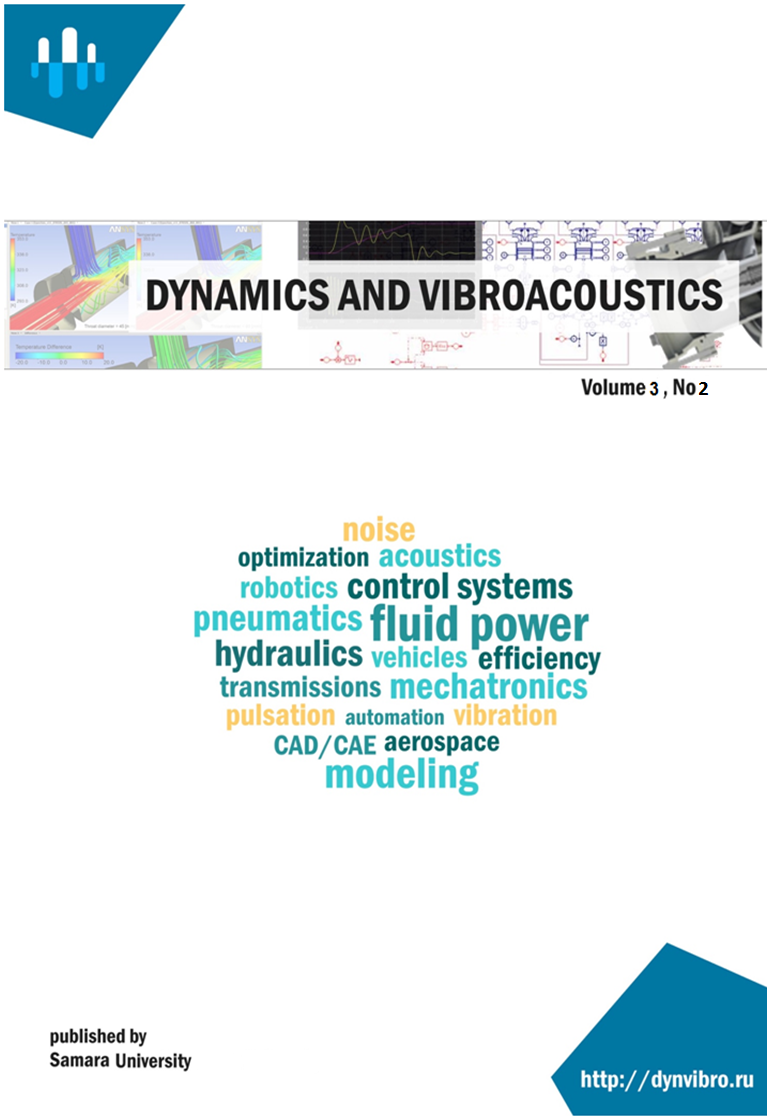Cross-section the laser beam of the structure for measuring the distance and orientation of the robot manipulator
- Authors: Grishanov V.1
-
Affiliations:
- Samara National Research University
- Issue: Vol 3, No 2 (2016)
- Pages: 42-48
- Section: Articles
- URL: https://dynvibro.ru/dynvibro/article/view/6138
- DOI: https://doi.org/10.18287/2409-4579-2016-3-2-42-48
- ID: 6138
Cite item
Full Text
Abstract
For stand-alone measure the distance of the robot manipulator or a robot as a whole and its orientation with respect to a reference surface is proposed to use optical-electronic system - standing with a camera and a laser module based on diode laser optics, forming a cross-shaped structure of the cross-section of the radiation beam . Opto- electronic system is mounted on the manipulator. At this point of intersection lines formed on a structured surface of an article by a laser beam in a cross can be used to measure distances and angular coordinates lines - for measuring the relative orientation of the manipulator of the measuring system. Measuring distances on the cross point, in fact, little different from the distance measurements on the position of the laser spot on the surface of the product in laser triangulation distance meter, the metrological parameters are studied in some detail, but in this case the particular topology of the cross-section of the laser beam widen the range of measurable distances . Metrological potential orientation measurements using intersecting lines on the surface of the base has not been studied, and that was the basis for this study.
About the authors
Vladimir Grishanov
Samara National Research University
Author for correspondence.
Email: vladgrishanov@yandex.ru
Associate professor of Department of Laser and Biotechnical Systems
Russian FederationReferences
- Leontieva, G.V., Pinaev, L.V. and Seregin A.G. (2012), Laser meter of non-rectilinearity, Laser string, Journal of Optical Technology, no. 10, pp. 52 – 57.
- Soldatov, V.P. (2012), Determination of the dependence of the measurement error of displacements by optoelectronic devices with multi-element radiation receivers on the signal-to-noise ratio, Measurement Techniques, no. 5, pp. 52 - 54.
- Souyfer, V.A. (2000), Methods of computer optics, Fizmatlit, Moscow, 688 p.
- Moshkin, V.I., Petrov, A.A. Titov, V.S. and Jakushenkov, Y.G. (1990), Tehnitcheskoe zrenie robotov , in. Jakushenkova, Y.G. (ed.), Mashinostroenie, Moscow, 272 p.
- Demkin, V.N. and Privalov, V.E.. (2008), Lazernye tehnologii pri izmerenii geometrii poverhnosti slognoj formy (review), Vestnik SPbO AIN. SPb.: SPbGPU, vol. 5, pp. 138 – 187.
- Burnaevskaja, E.V. and Grishanov, V.N. (2014), Applications of structured in space and time laser beam in vibrometer, Dinamika i vibroakustika, vol. 2, no. 1, pp. 19 – 28.
- Vygodsky, M. Ya. (2006), Handbook of Higher Mathematics , AST: Astrel, Moscow, Russia, 991 p.
- Davydenko, E.V. and Priorov, A.L. (2009), Solution of the problem of automatic determination of the position of the video camera in the system of optical laser triangulation , Measurement Techniques, no. 8, pp. 44 - 47.
- Mordasov, M.M. and Savenkov, A.P (2015), Measurement of geometric parameters of interfaces of gas-liquid systems, Measurement Techniques, no. 7, pp. 47 - 49.
- Solomatin, V.A. (2016), Accuracy of measurement of relief in laser scanning, Measurement Techniques, no. 6, pp. 42 - 44.
Supplementary files







